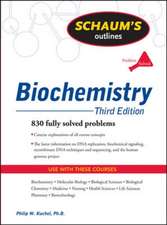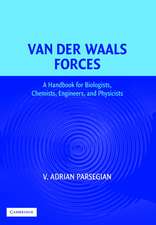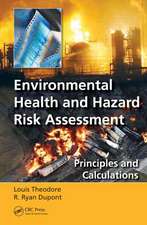Combined Effects of Drugs and Toxic Agents: Modern Evaluation in Theory and Practice
Autor Gerald Pöchen Limba Engleză Paperback – 16 mar 1993
Preț: 363.79 lei
Preț vechi: 382.95 lei
-5% Nou
Puncte Express: 546
Preț estimativ în valută:
69.61€ • 72.68$ • 57.61£
69.61€ • 72.68$ • 57.61£
Carte tipărită la comandă
Livrare economică 05-19 aprilie
Preluare comenzi: 021 569.72.76
Specificații
ISBN-13: 9783211824344
ISBN-10: 3211824340
Pagini: 180
Ilustrații: XI, 167 p. 53 illus.
Dimensiuni: 170 x 244 x 9 mm
Greutate: 0.3 kg
Editura: SPRINGER VIENNA
Colecția Springer
Locul publicării:Vienna, Austria
ISBN-10: 3211824340
Pagini: 180
Ilustrații: XI, 167 p. 53 illus.
Dimensiuni: 170 x 244 x 9 mm
Greutate: 0.3 kg
Editura: SPRINGER VIENNA
Colecția Springer
Locul publicării:Vienna, Austria
Public țintă
ResearchCuprins
1 Principle considerations of drug actions and interactions.- 1.1 Introduction.- 1.2 Dose-response curves.- 1.3 Time course of effects.- 1.4 Phenomena and mechanisms: interactions between drugs — antagonism and synergism.- 2 Concepts and models of interactions - additivity and independence.- 2.1 Concept and phenomenon of additivity.- 2.2 Site-directed analysis.- 2.3 Concept of independence.- 2.4 Relationship between additivity and independence.- 2.5 Summary and conclusions.- 2.6 Tips and hints.- 3 Synergism/potentiation and antagonism - phenomena and mechanisms.- 3.1 The current dilemma.- 3.2 Towards a uniform characterization of synergism/potentiation and antagonism.- 3.3 Potentiation (synergism).- 3.4 Antagonism.- 3.5 Comparison of complex with simple interactions.- 3.6 Quantitative expression of combined effects.- 3.7 Suggestions for quantitation of combined effects.- 3.8 Tips and hints.- 4 Evaluation by dose-response curves.- 4.1 New methodological approach: fixed-dose studies.- 4.2 Fixed dose-ratio combinations.- 4.3 Tips and hints.- 5 Evaluation by time-course studies.- 5.1 Time course of independent actions.- 5.2 Dose-additive time course.- 5.3 Statistical comparison of observed and expected time course.- 5.4 Time-course studies with log response scale.- 5.5 Comparison of time-course studies and dose-response studies.- 5.6 Conclusions.- 6 Single-dose and other studies.- 6.1 Single-dose studies.- 6.2 Other studies.- 7 Combined-effect graph and other graphs.- 7.1 The construction of the combined-effect graph.- 7.2 Comparison of observed with independent effects.- 7.3 Yonetani-Theorell plot for enzyme inhibitors.- 7.4 Tips and hints.- 8 Applications of the new approach and observations.- 8.1 Biochemistry and physiology/pathophysiology.- 8.2 Experimentalpharmacology.- 8.3 Clinical pharmacology - drug combinations.- 8.4 Chemotherapy of infections and tumors.- 8.5 Experimental and environmental toxicology.- 8.6 Epidemiology - risks.- 8.7 Herbicides.- 8.8 Conclusions and discussion.- 9 A new and critical view of isobolograms.- 9.1 Inappropriate conclusions.- 9.2 Pitfalls.- 10 Comparison of the new with the conventional approach.- 10.1 Experimental dose-response curves and isobolograms.- 10.2 Evaluation of combined effects in the future.- Epilog.- Appendix A - Glossary of terms and abbreviations.- Appendix B - Guide to practical work: exercise examples.- References.











